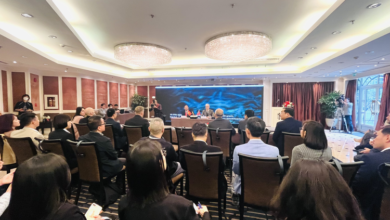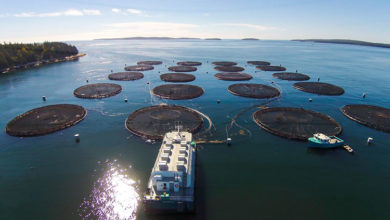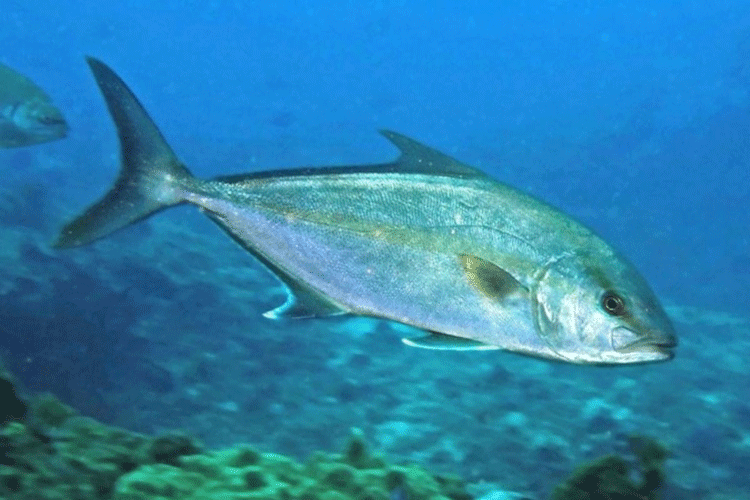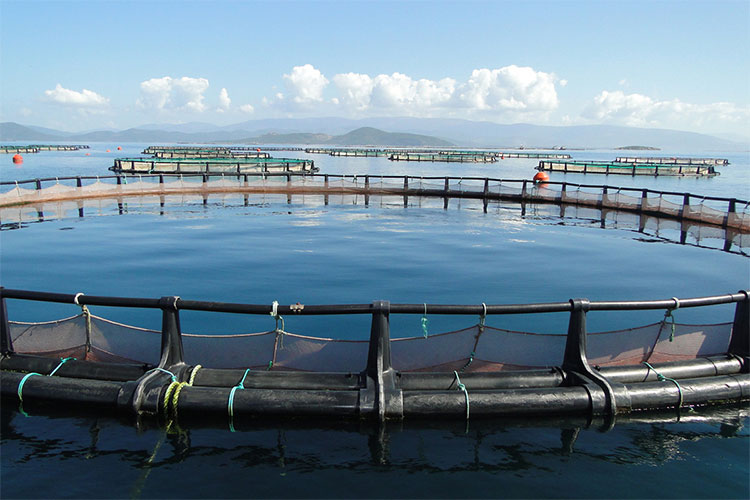USSEC: Powering the Future of Aquaculture with Soybeans

Aquaculture accounts for more than 50% of total global seafood production volumes, and aquaculture production volumes are increasing at a rate of 3.3% globally. Meanwhile, capture fisheries volumes have remained relatively constant for decades, and have declined slightly in recent years. Demand for seafood products will continue to increase with the increasing global population. By 2050, global demand for protein will increase by 20%, leading to a corresponding rise in demand for seafood. The Food and Agriculture Organization (FAO) predicts that aquaculture production volumes will reach 140 million metric tons by 2050, which means that aqua feed production volumes will also minimally double during this time. The aquaculture industry will have to find alternative protein sources for feed production to achieve this growth level sustainably. Soy products are well positioned to play a crucial role in this effort.
Transitioning to Sustainable Feed Sources
Moving away from a reliance on marine-derived ingredients has been a priority for the aquaculture industry for decades. Plant proteins are already the most used ingredients in aquafeed production globally. Soy has been a key ingredient used to replace marine ingredients in aquaculture, and its use has played a critical role in the aquaculture industry’s rapid expansion over the past two decades. Soy is a highly digestible protein source for aquatic species and presents advantages throughout the supply chain to ingredient purchasers, feed millers, and fish producers.
The Advantages of Soy in Aquafeed
Using quality protein sources in aquafeed formulation is critical for the performance and, ultimately, cost efficiency of feeds. Access to a consistent, non-seasonal supply of one protein source benefits a feed miller who will not have to modify formulations regularly to account for variability in ingredient availability. Using soybean meal with consistent protein, amino acid content, and digestibility reduces or sometimes eliminates the need for safety margin use in feed formulation. Undamaged soybeans of consistent quality before crushing provide this advantage. This consistency reduces the cost of feed production, which is a savings that the owner can then pass down to the end user. Soybean meal is also easily stored in bulk at the feed mill, eliminating the need for multiple ingredient storage containers and increasing feed mill organization and efficiency. It is also a commonly and easily shipped cargo.
Nutritional and Operational Benefits
Soy is a protein-rich, low-cost feed ingredient suitable for inclusion in the diets of many aquatic species. The amino acid profile of soy protein products matches that of many finfish and crustacean species, and these amino acids are highly digestible and available to the fish. The benefits of soy extend beyond protein and amino digestibility to energy content. An example is the sucrose levels of U.S. Soy, which are significantly higher than soy of other origins. The increased energy content can be of greatly benefit fish with high metabolic demands.
Harnessing the Power of Soy for the Aquaculture Sector
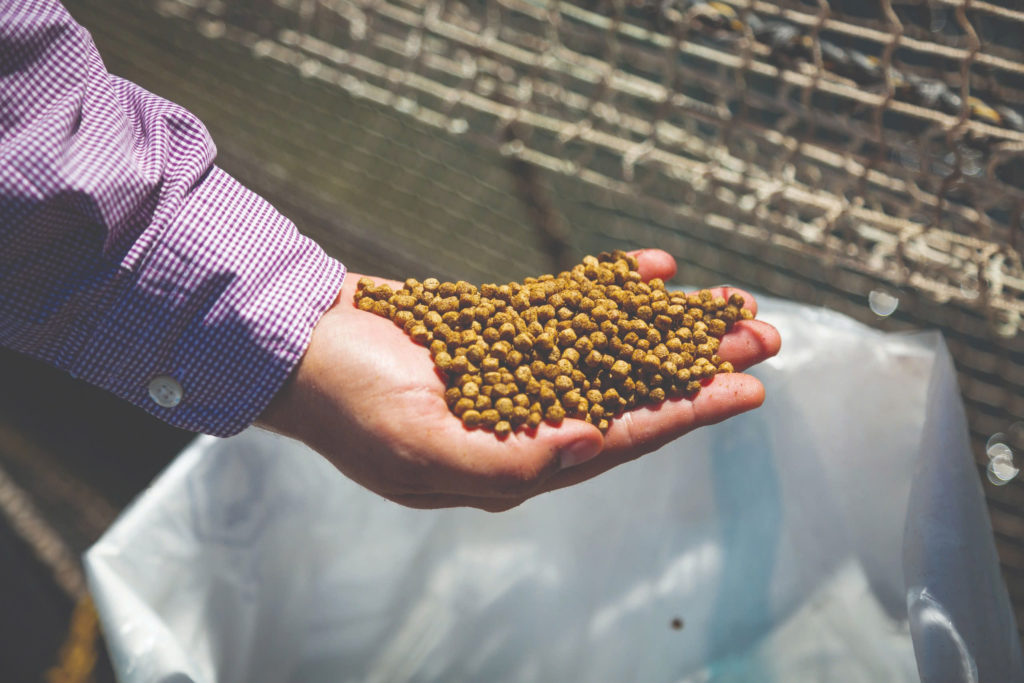
Notably, the surging demand for global fish and seafood supplies will require a mastery of how to transform soy harvests into the sustainable feed ingredients that is required. The Soy Excellence Center (SEC) fills this gap of addressing the global need for sustainable food production by training the next generation of aquaculture professionals. Through a network of educational hubs, including Soy Excellence Center Asia (SEC Asia), the organization aims to nurture the next generation of aquaculture professionals with the skills and knowledge needed to continue feeding the world safely, effectively and sustainably.
Instructors, backed by aquacultural researchers from the US and globally, deliver education on the integration of science, innovation, and sustainable practices to meet evolving aquaculture needs. The curriculum is designed to offer practical insights and hands-on learning for early-career professionals.
For aquaculture professionals that are keen to further their understanding of the industry, the SEC Asia Aquaculture course provides participants with the practical knowledge and skills necessary for effective aquaculture management, ensuring sustainability and profitability in their operations. The course offers a foundational understanding of aquaculture with the focus on the species, production systems and markets that are centered around Asian practices. The curriculum further delves into the ins and outs of the sector from aquaculture practices, production methods, key species, and the essentials of setting up and managing land-based pond facilities. It also includes sessions on water quality management, broodstock and hatchery practices, nutrition, feed manufacturing, feeding practices, harvesting, product processing, and farming standards.
In addition to offering courses to further the development of the aquaculture industry, SEC also supports a digital community where participants exchange knowledge, collaborate on new ideas and build connections with industry experts. Flexible online courses allow learners to progress at their own pace, while benefiting from a global network.
Ultimately, these centers aim to develop more skilled professionals, increase food production capacity and meet the growing demand for U.S. Soy, contributing to the sustainable nourishment of the world’s expanding population.
The Future of Soy in Aquafeed
Reducing dependence on marine-derived ingredients using scalable solutions is critical for the expansion and improved sustainability of aquaculture globally. The inclusion of soy products in aquafeeds has already played a crucial role in the exponential growth of the aquaculture industry over the previous two decades. Soy will continue to play an essential role in the industry’s efforts to sustainably meet growing protein demand due to economic, biological, and sustainability benefits. The future of soy in aquaculture lies in the continued inclusion of soybean meal in feed formulations and the development and application of value-added soy products such as fermented soybean meal, soy protein concentrate, and others.
SEC is leading the movement for sustainable aquaculture to meet global fish and seafood demand, and its initiatives not only bolster regional food security but also establish Southeast Asia as a global leader in sustainability. Through its comprehensive courses, dedication to accessibility, and focus on sustainable practices, the Centre is shaping the future of the health and nutrition of fish and seafood. Its innovative approach to education and community engagement is setting new industry standards and driving meaningful change.
Find out how to drive innovation and meet the growing demand for nutritious, sustainable fish and seafood here: https://soyexcellence.org/.


